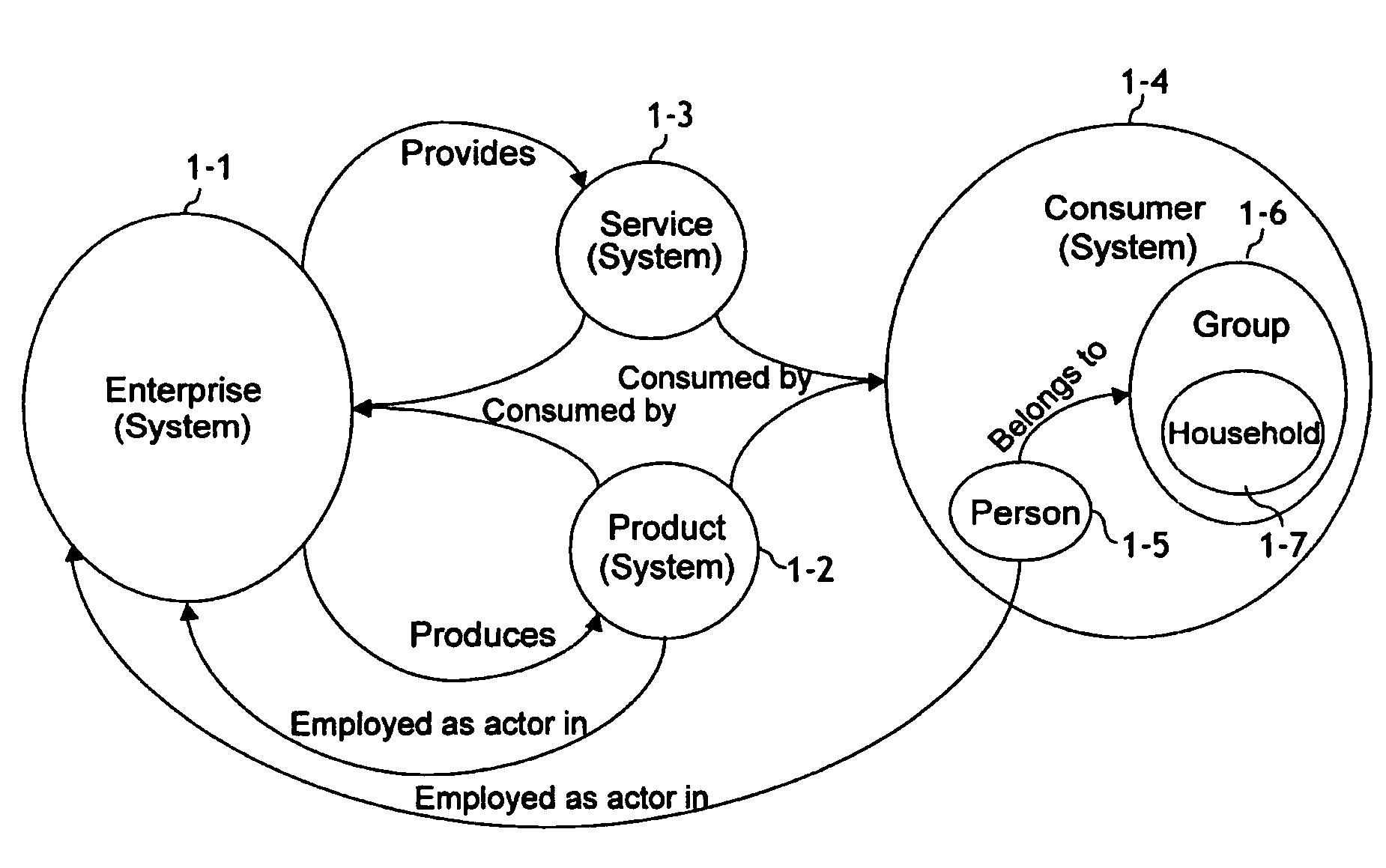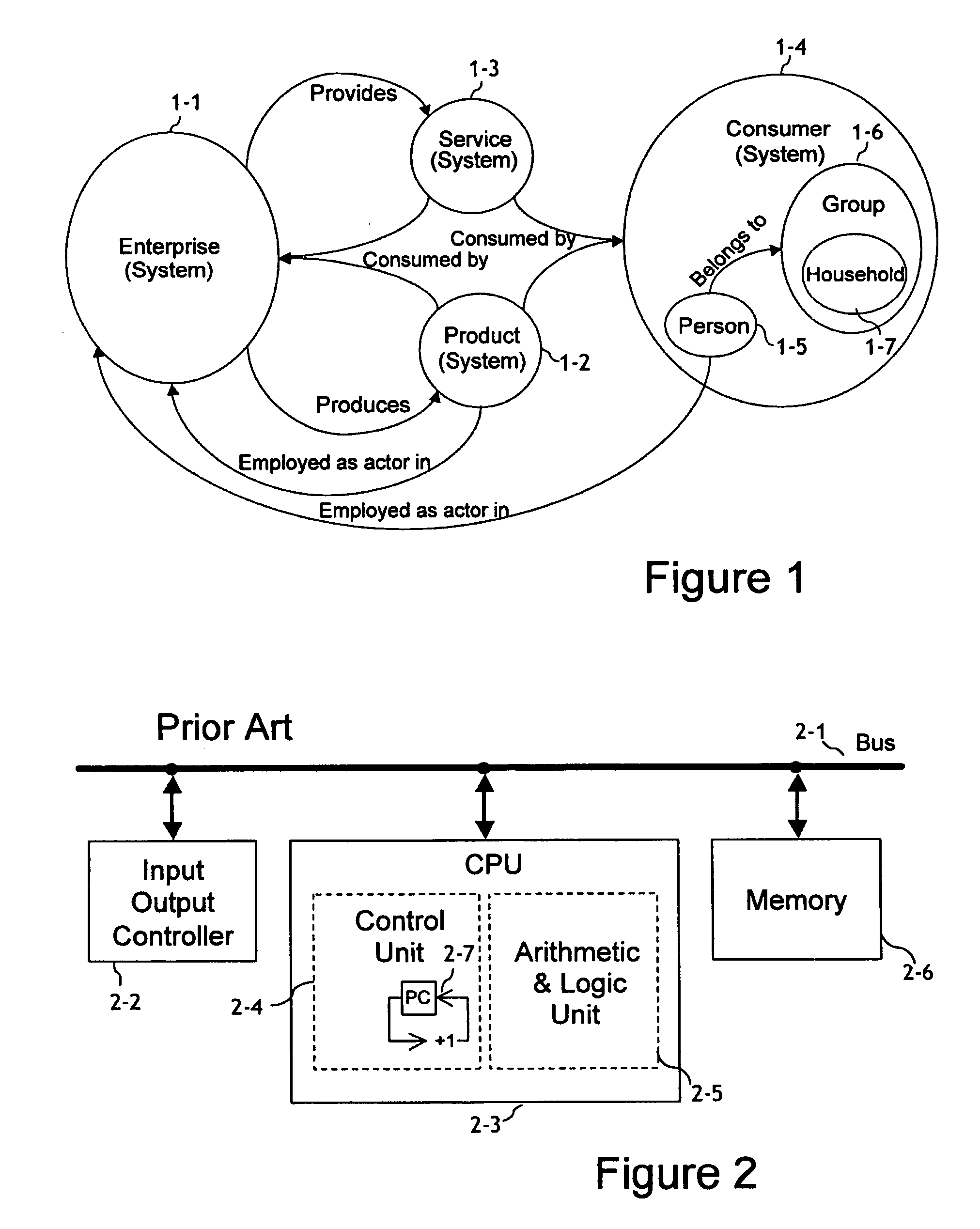The tools which have developed over the last fifty or so years are in many ways inadequately equipped to address the challenges of modern systems, such as the system described above.
The inventor considers that this is because: their underlying architectures are essentially sequential or serial in nature, whereas most real-world systems are highly parallel or concurrent; they typically have static definitions, which makes them difficult to adapt as real-world systems change over time; they reinforce semantic gaps between different
layers of architecture and different stages of development; and because different disciplines use different languages and tools for very similar phenomena, inhibiting the sharing of solutions, particularly in complex, socio-
technical systems.
However, most of the applications supported by today's and tomorrow's computers are very different to the computations required a few decades ago to break codes or to predict
missile trajectory.
Similarly, the current proliferation of computing devices was not predicted in Von Neumann's time.
At that time, it was expected the potential for such devices would be restricted to scientific and military applications, and that there would perhaps some hundreds of computers at most.
However, these approaches tend to reinforce semantic gaps, to support only coarse-grained parallelism or to be limited to relatively specialised computational applications.
Token matching adds considerably to the complexity of the approach, which has consumed much of the development effort associated with
Dataflow machines.
This limits the
Dataflow model's range of solutions to those involving computation, as well as limiting its capacity to support dynamic execution of models which can be extended or reconfigured.
However, this has not fundamentally addressed the limitations inherent in either approach.
This is both a strength and a
weakness of actor systems.
However, it limits the degree of
granularity of
concurrency to individual behaviours, each of which may include multiple, conditional commands.
It can also be said that the Actor model widens the
semantic gap between modern systemic applications and the underlying
computational environment, such as requiring convoluted mechanisms for handling non-communication related events, thereby limiting its real-world application.
This approach is recognised to have certain drawbacks, including inhibiting
cycle time reduction, unnecessary power dissipation and unfortunate
noise and emission side-effects.
However, this research, carried below the level of the overall
computer architecture, has not addressed the underlying sequential nature of the Von Neumann architecture.
As such, these languages embody the limitations of the sequential machines.
However, due to the monolithic, sequential nature of the underlying hardware model, these configurations add significant complexity to the supporting
operating system, proportional to the tightness of
coupling, particularly in the areas of process scheduling and synchronisation.
However, in most cases, the meta-data is not available to users or their applications, being either implicit in the application, or held in analysis and
design phase models which have not been translated through to the ultimate application.
This inhibits the flexibility of most such applications to adapt as the context in which they are being used changes.
However, such
MOPs are only available to specialist programmers during development and are not available for modification at run time—i.e. post compilation or interpretation.
They also appear to add considerably to the complexity of execution, making it difficult for them to support concurrent execution in particular.
However, such agents have found limited sustained commercial value, due to their complexity and to the cost of building them.
They also typically have poor run time performance.
While Expert Systems have had some considerable technical effect and commercial success, as did the R1 system described above, production rules were found to have poor performance, due to the resources consumed by
forward chaining search algorithms, and limited application.
As a result, several different knowledge representation mechanisms, which are difficult to integrate, can be present in modern-day knowledge-based systems.
The fact that the techniques employed in designing organisations, processes,
software and hardware are different is a significant issue since it can be difficult to describe and / or
design systems which span these different domains.
They are also incomplete since not all rules concerned with the behaviour of the system can be captured.
While Z models are not flow based, they have no mechanisms for describing event-driven systems.
Because they are not built into the
solution system, these techniques typically are disconnected from the final system.
Lastly, these techniques do not allow meta-objects to be modelled easily alongside objects, which limits their ability to support adaptive behaviour.
Dynamic complexity on the other hand is the complexity of “non-obvious consequences” where unforeseen interactions between elements of a system have unexpected effects, particularly over time.
There is no facility within such
simulation models to have activity triggered by an internal change of state, other than the passage of time.
The fundamental difference between parallel and distributed simulations is communication latency between “logical processes” in the
simulation.
Even some of the more popular attempts at defining a
concurrent computation model (e.g. CSP) have been constrained by this viewpoint, limiting the
granularity of the parallelism which they have been able to achieve.
The first is the gap which has developed between high-level languages and the underlying
computer hardware as hardware designers have attempted to work around the limitations of the Von Neumann Architecture with techniques such as pipelining.
Most of the tools in use today to understand and
design systems tend to be unsatisfactory since they do not allow the designing-in of the ability to adapt as understanding of the subject system changes.
Consequently, change is resisted and, when it finally becomes inevitable, it can be traumatic.
Many IT project failures are caused by failing to recognise the “people
change management” implications of a particular technical solution, primarily because application developers and
change management specialists lack the tools and language to help them understand others' points of view.
 Login to View More
Login to View More  Login to View More
Login to View More 


